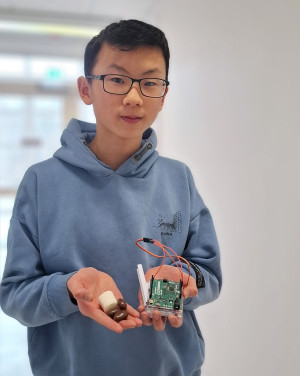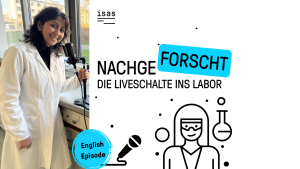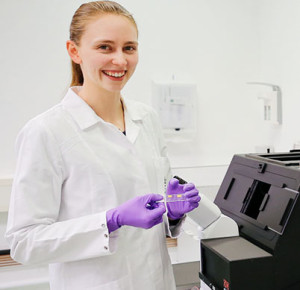Dortmund, 26th February 2025

Leon is joining the researchers in the AMBIOM research group for two weeks. In his internship, he is working on automated image recognition.
Leon (15) is in the ninth grade at a grammar school in Bochum – but he is currently spending two weeks accompanying researchers at ISAS. In the AMBIOM – Analysis of Microscopic BIOMedical Images research group, Leon has been able to work on his first own projects during his school internship. To get an insight into his internship, the editorial team asked Leon to complete the following sentences.
-
In the AMBIOM research group…
I am still a newcomer because I have little previous experience. Nevertheless, I already have my own projects, such as an AI application that can recognise objects. I used a software to train a new AI model to recognise whether there is a marshmallow or a piece of chocolate in front of the webcam. Image classification with AI is used in biomedical research, for example to analyse cells. For my second project, I am applying AI to create my own website to share my experiences and thoughts about the internship. To do this, I watched tutorial videos and used AI to write the code for the website.
-
So far, I have learnt…
a lot about bioinformatics and AI. I have been in the lab to look at the knee joints of mice under a microscope. Furthermore, I have learnt about the construction of a 3D printer. I also looked closely at how to create a 3D model of microscope mounts and how to print it in the end. Right now, I am developing a model of a tower on my own. The plan is to print it later and take it home as a souvenir.
-
I particularly like...
the diversity here. Every person in the AMBIOM team has a different job and every week the researchers discuss the projects with each other.
-
From the internship I will take home…
that the work as a scientist can be very diverse. I used to think that researchers were in the lab all day doing the same thing. But it is not like that at all, there are many different tasks. I am glad that I have already been able to gain so much experience here. Maybe I will have the opportunity to come back for another internship.
(Protocol: Anna Becker)








